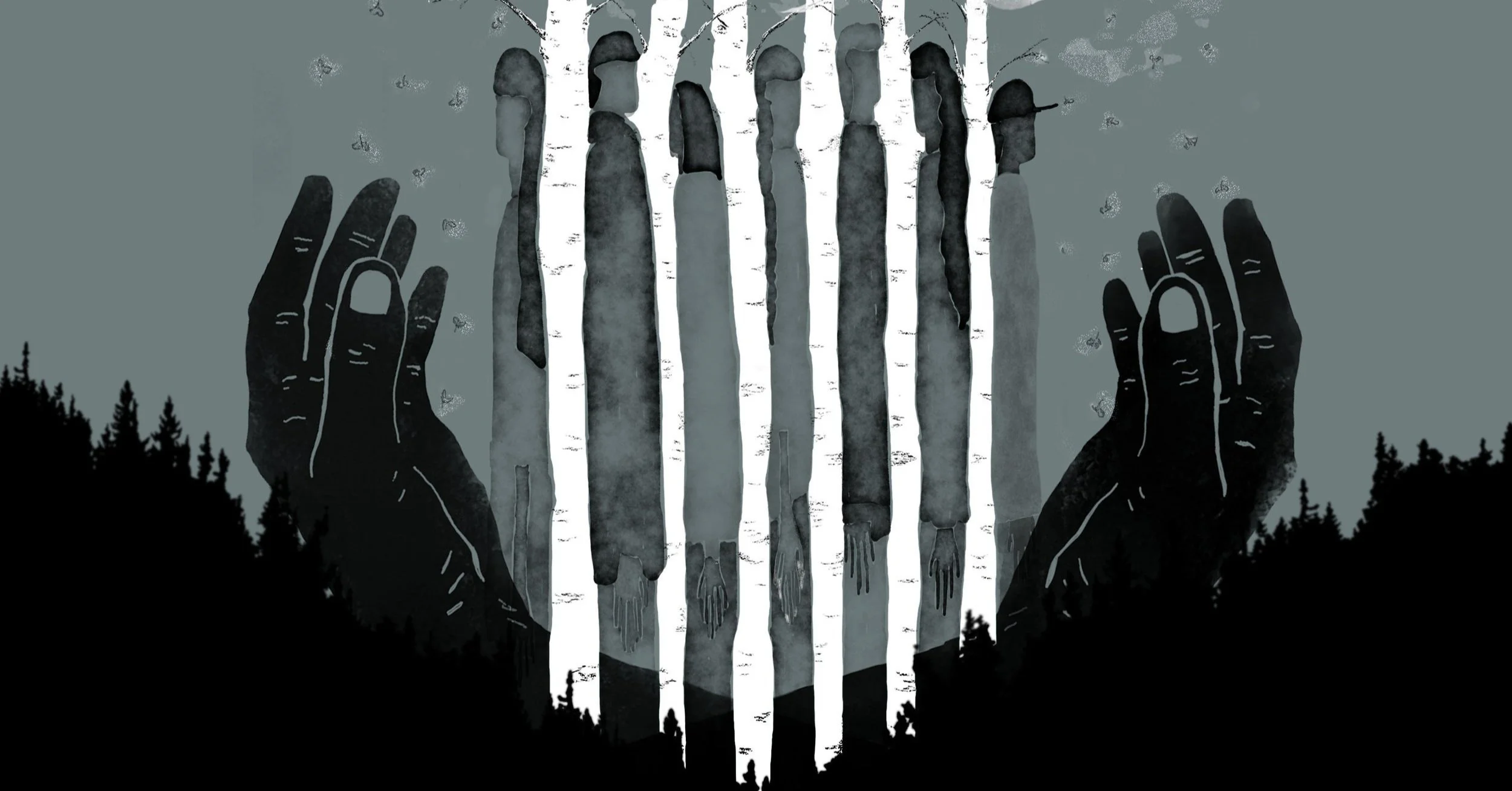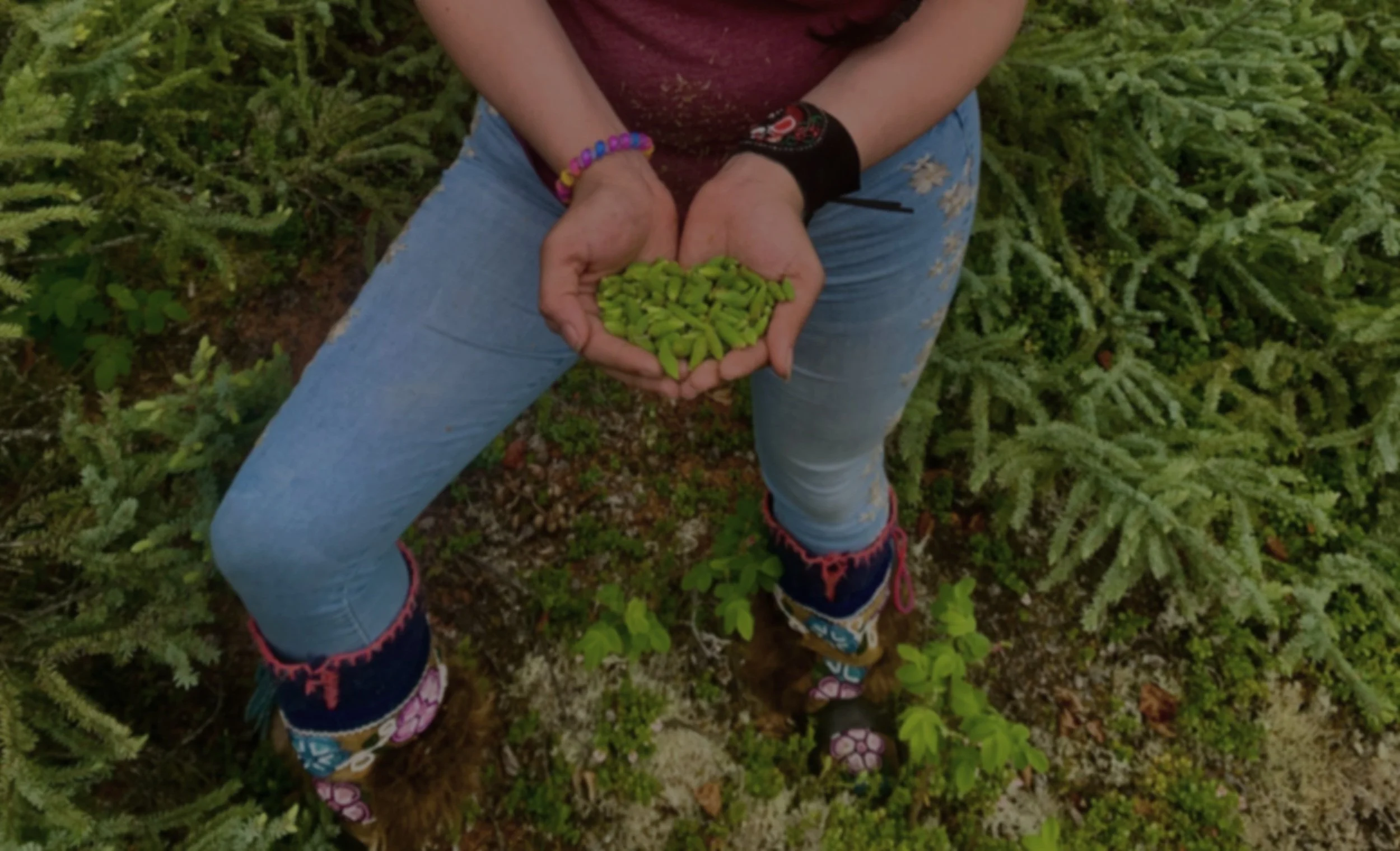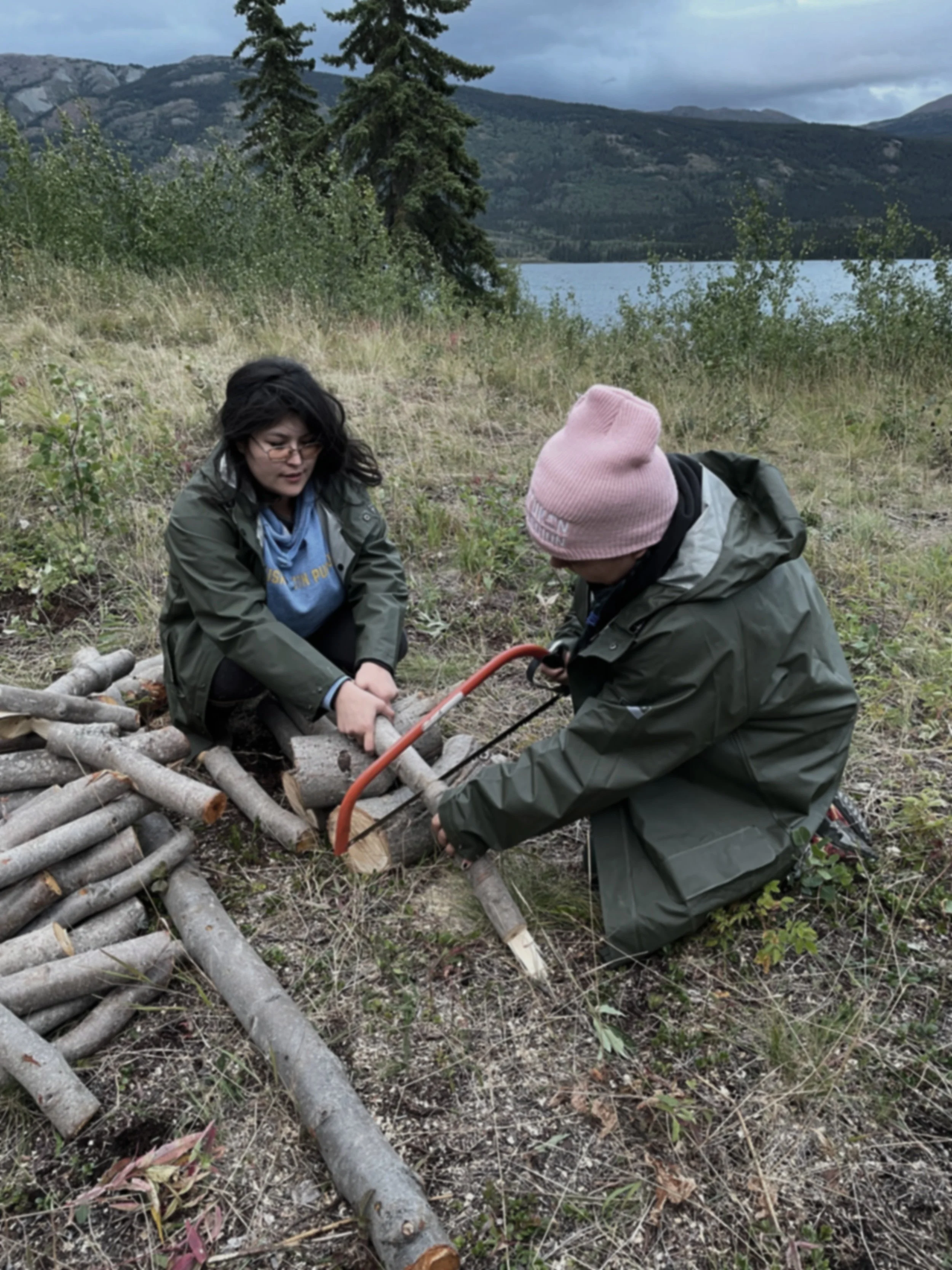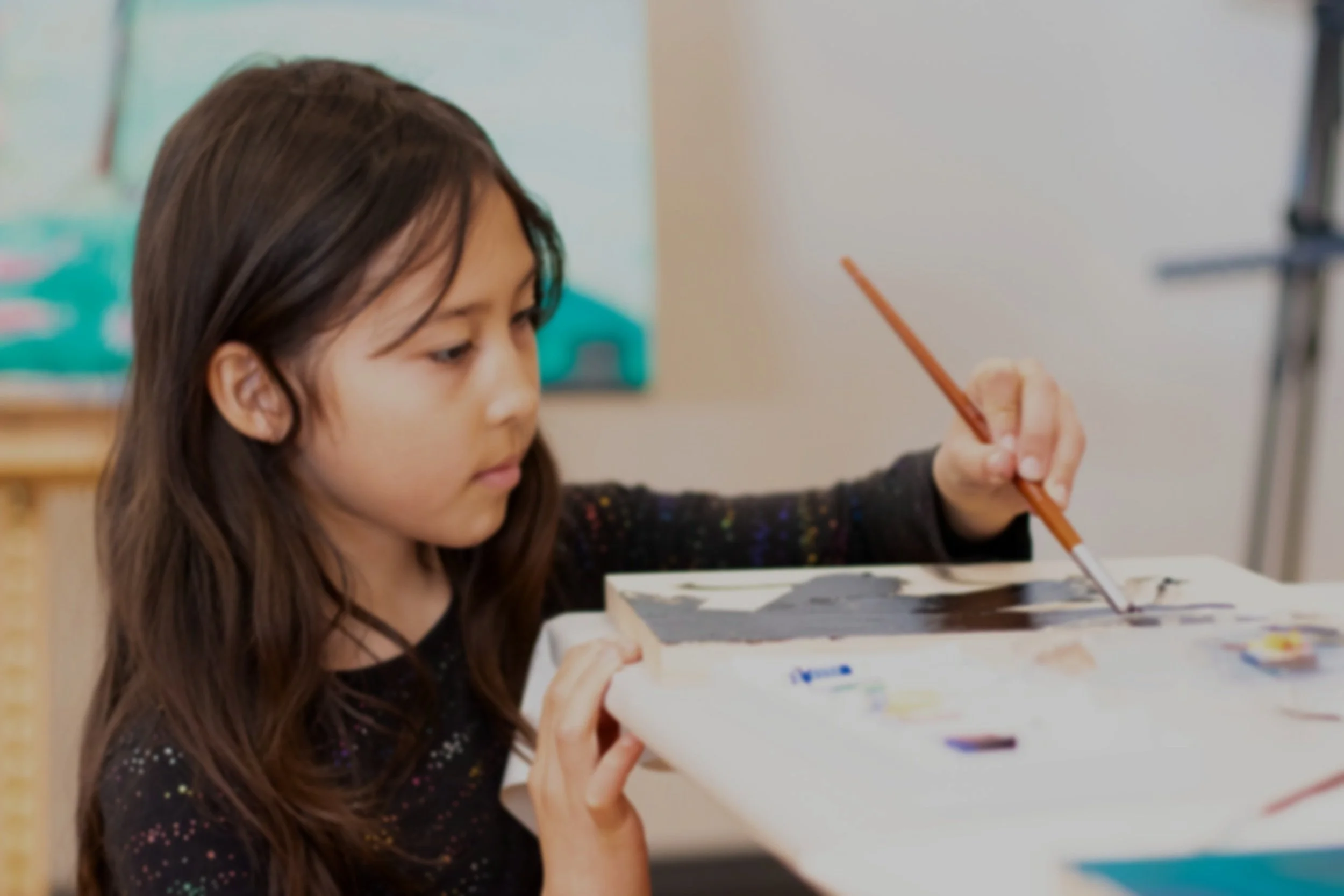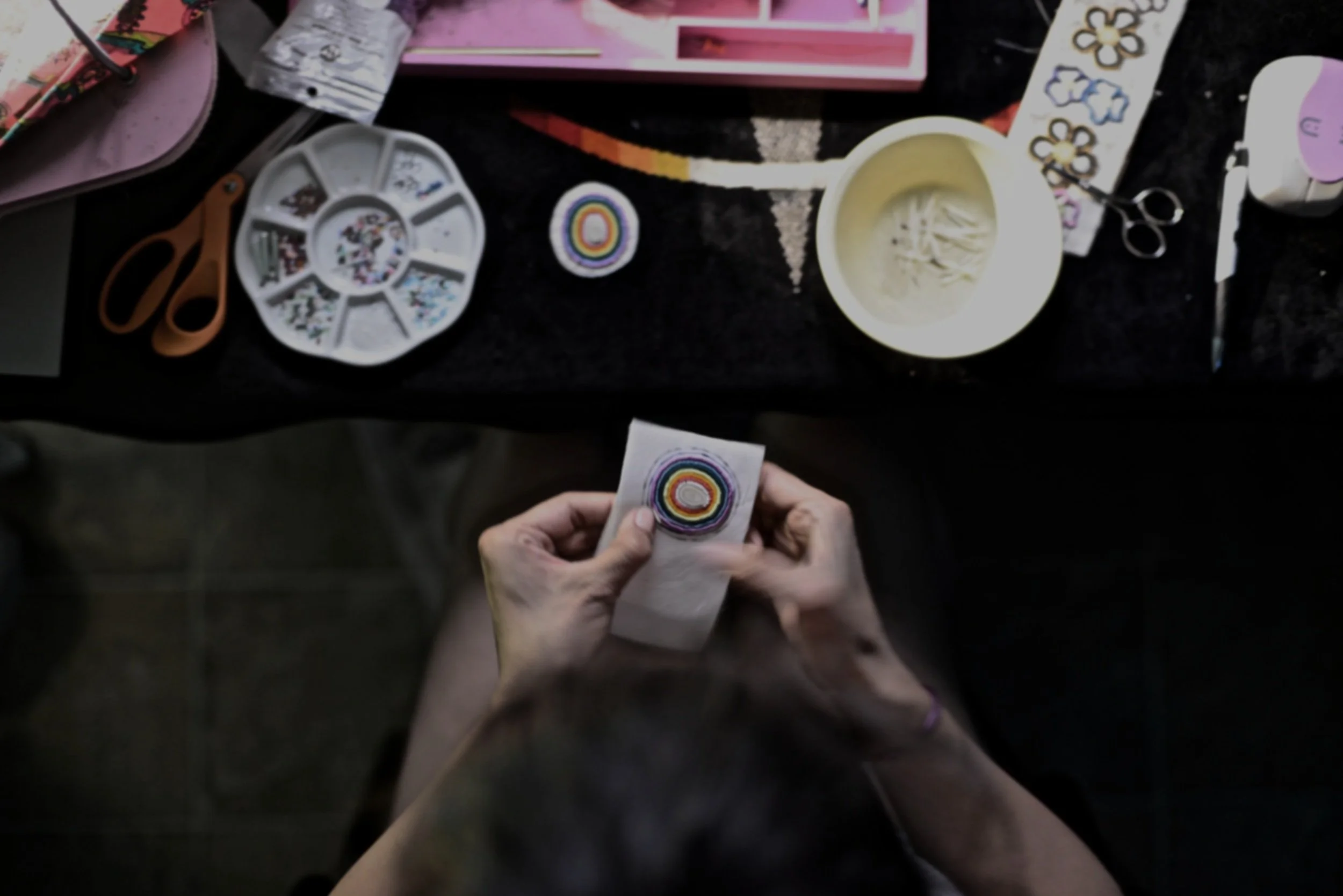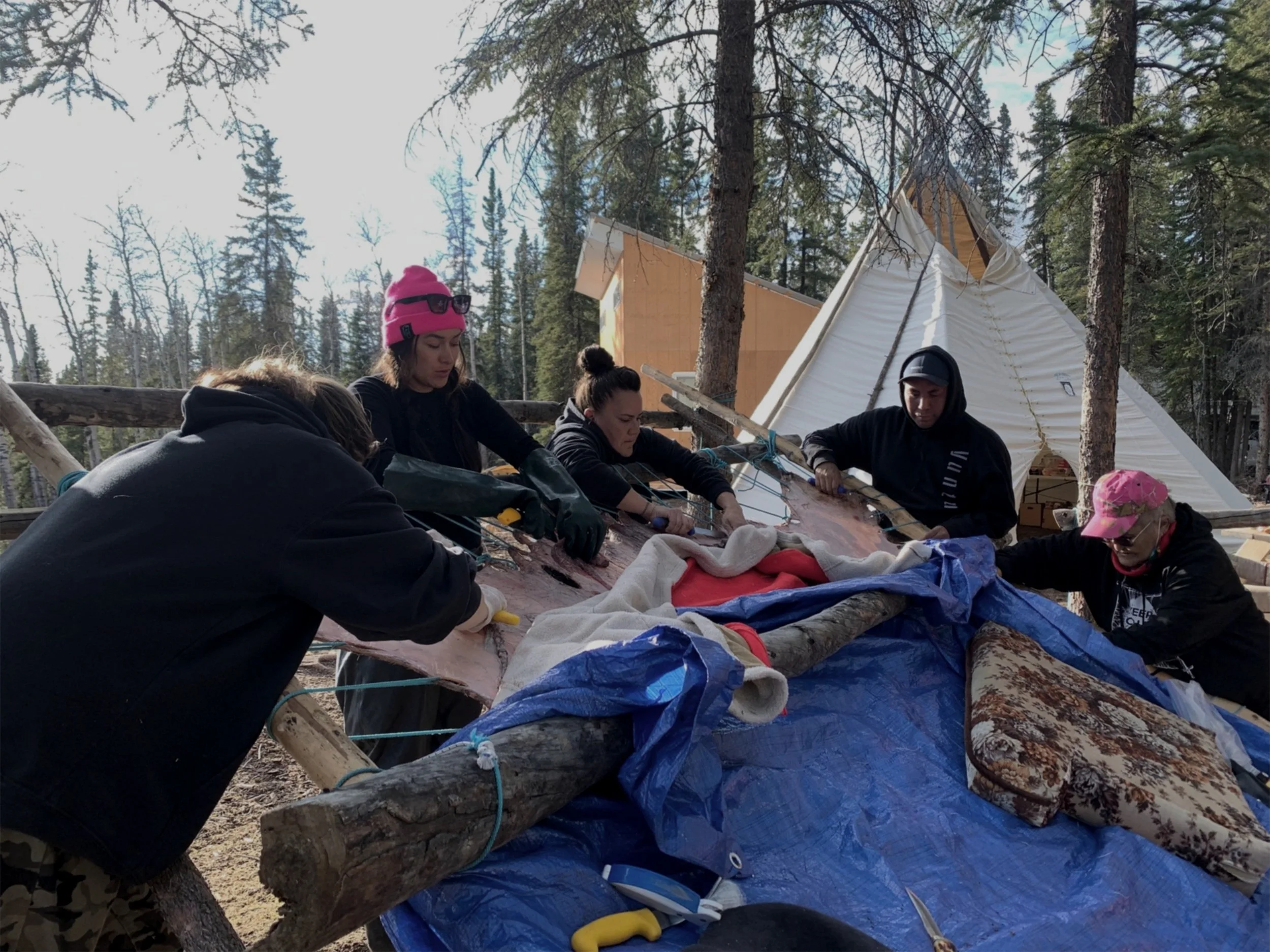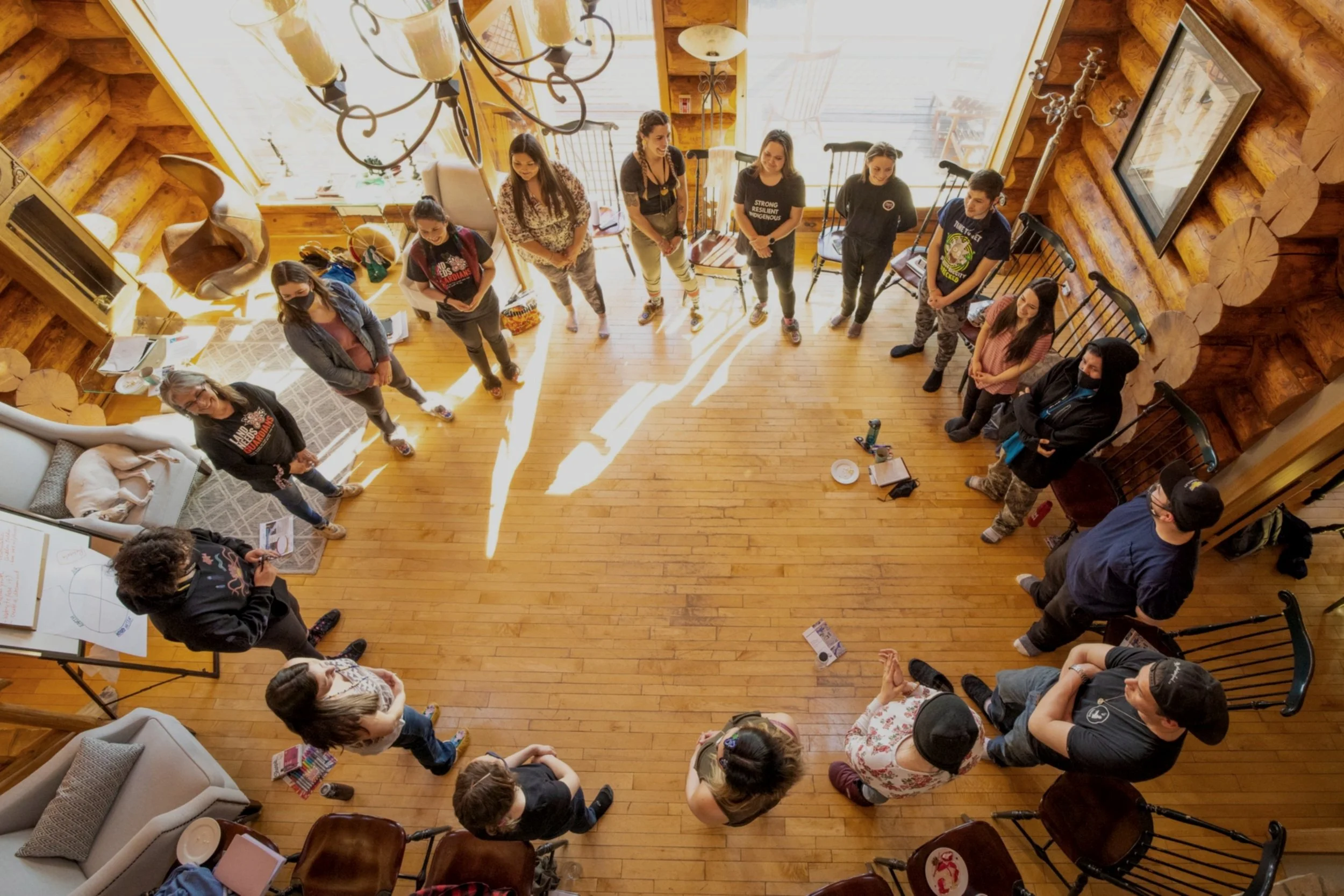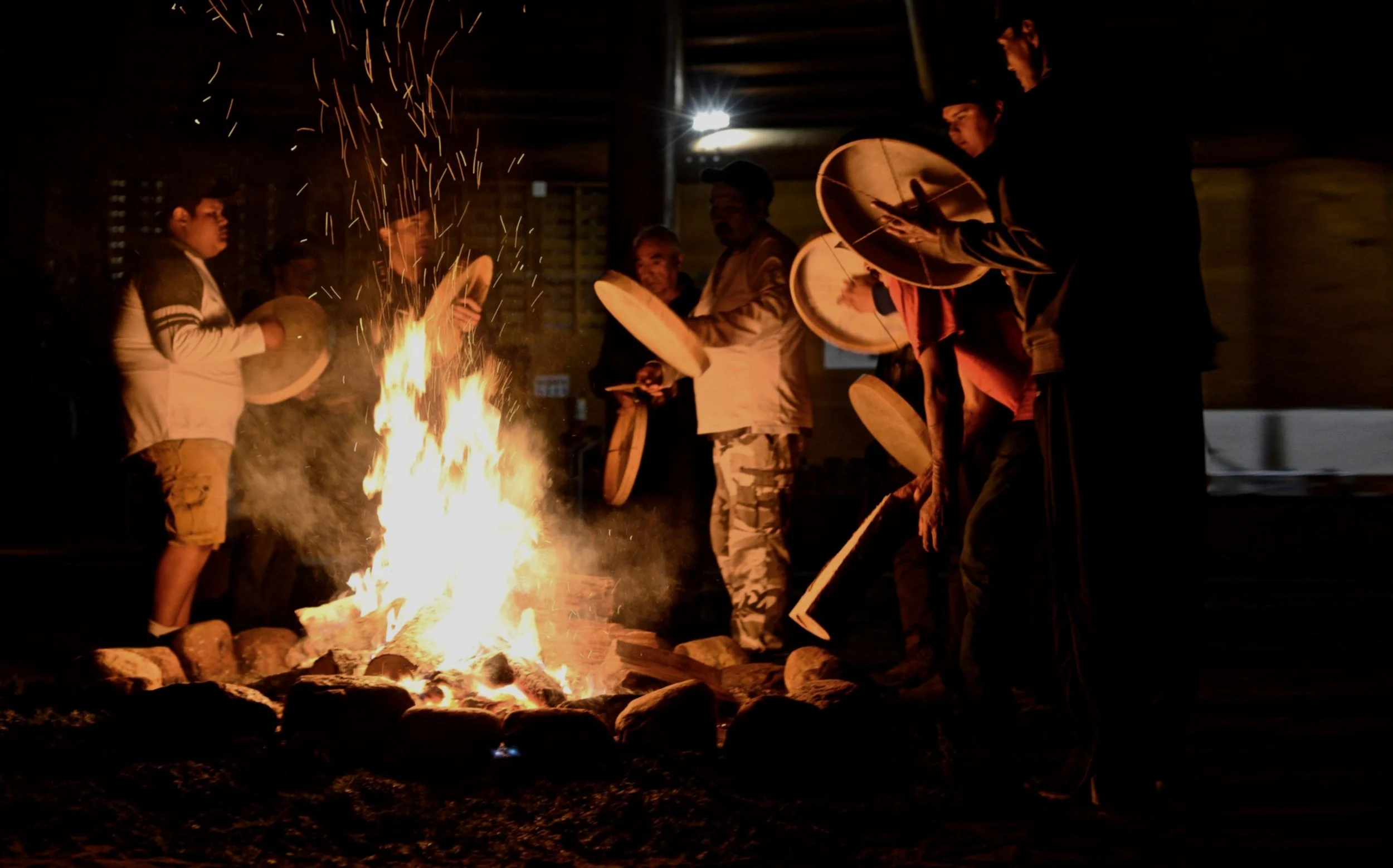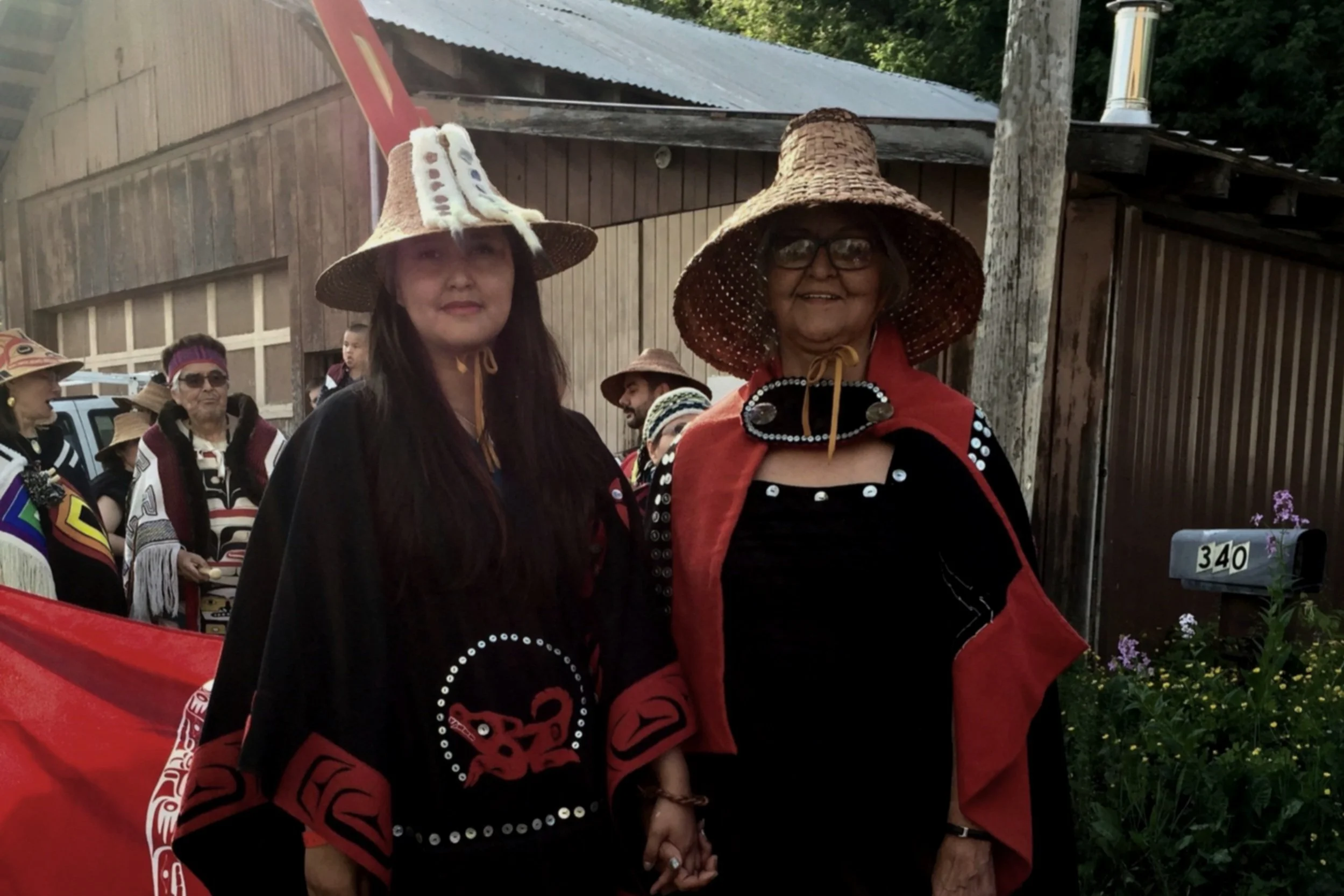Seeds of Reconnection
Here we present our Story from our journey as the yukon first nations climate action fellowship. We share this story as an example of our Reconnection philosophy in practice.
We cannot prescribe a one-size-fits-all Reconnection pathway. Each individual, community and organization will have a unique journey. Through Our Story, we illuminate the systemic structures that represent barriers to Reconnection. We identify Reconnection Seeds that may guide an approach to overcoming these barriers.
Rather than this being a traditional policy plan, we chose to uphold our Indigenous ways by offering Our Story. Here we will share the teachings of our own reconnection journey, to acknowledge and honour the variety of pathways that represent the individual and collective work of Reconnection that is for each of us to define and be responsible for.
11
1
Sògòsene edenahtʼį̄
Tagish / “Take care of yourself”
HEAL OURSELVES
A spider constantly works on its web as it becomes easily tattered. Similarly, a fishnet must be frequently mended. Staying connected takes time and energy. We need to know how to mend our web to be whole.
In February 2020, Yukon First Nations Leaders gathered and declared a Climate Emergency. They decided the youth must lead climate action, as “it is their future at stake and they will inherit the decisions made now.” Prior to this, a member of our Steering Committee (SC) had a dream and knew it was a group of youth who would form the Yukon First Nations Climate Action Fellowship. In Fall 2020, the SC and Elders developed a recruitment approach to build the Fellowship. Rather than assessing individual accomplishments, selection focused on balancing the group in gender, indigenous language group, clan, introversion/extroversion, and life experience. Over 30 women applied while the SC had to actively recruit young men.
Our Fellowship represents the experience and diversity of Yukon youth. We arrived with anxiety, addictions, insecurities, feelings of shame for not knowing our culture and language, a longing for our community, and a sense of imposter syndrome. The Fellowship felt like something we weren’t worthy of. We also came with leadership, strength, wisdom, determination, and vision, though we may not have realized it then. With the love, purpose, and belonging of the Fellowship family, we were able to begin healing.
-
Being strong, grounded, and whole is the foundation of Indigenous ways of being. Our culture is inherently healing.
We have normalized repressing trauma and operating in survival mode in our society. We can also normalize healing and wholeness. Everything we do can be trauma-informed.
The shame and stigma around mental health and expressing emotion prevents healing. Being true and sharing our healing journey with others can support a culture of healing.
The importance of mental health is not prioritized in our daily lives, our jobs, or at school.
Academic, professional, and personal settings trigger trauma responses (i.e. fight, flight, freeze, fawn) through imposed norms such as deadlines, tests, 37.5hr work weeks, financial stress, power imbalance, mechanistic procedures and communication.
Self care is community care. When you are healthy, it transforms everyone around you.
Collective and group healing is powerful as we create safe space together, in addition to our individual healing efforts.
-
How do we create and normalize healing in how we live, learn, and work?
What does a healthy, balanced life look like?
How can everyone learn healing and wellness skills? From babies to Elders?
Blood memory is in the evolution of people. It’s in the hardships we’ve gone through in residential school. It stays in our blood and that is how we know that we have to keep surviving and keep going with the Land in hard times. When there was a hard, heavy winter, we pushed ourselves to keep looking for food - the cold teaches us that we need each other.
- Kadrienne Hummel
2
Deyéh kénḗhdḗl!
Kaska Dena / “work together”
WORK TOGETHER
Spider shared his knowledge of harvest with the couple with trust and patience. He taught them to work together.
The Fellowship partners: The Assembly of First Nations (AFN) Yukon Region, the Council of Yukon First Nations (CYFN), Yukon University and Revitalizing Indigenous Virtues for Earth’s Regeneration (RIVER), with support from the Youth Climate Lab, Northern Council for Global Cooperation, Yukon First Nation Elders, Yukon First Nations and others, worked together as the Fellowship Steering Committee (SC). The SC strived to work together in equity, with little hierarchy, where no one partner had sole control over the project. The arrangement sought to break down silos, ensure project autonomy, build trust between partners, develop a Fellows-first decision-making approach, and enable change making throughout the project. To prepare for the Fellowship, the SC piloted RIVER’s Illuminating Worldviews course, where underlying assumptions and impacts of the dominant western worldview were explored through circle dialogue. All meetings and spaces in the Fellowship began with prayer or poetry followed by check-ins. This grounding practice built trust and an understanding of how everyone was arriving to the space. It nurtured patience and compassion for individual experiences and became a space to support each other. We all carry so much. Together, we took training in conflict communication and resolution as well as trauma-informed care.
We represent 10 of the 14 Yukon First Nations, as well as the transboundary Taku River Tlingit First Nation. We are from unceded and Self-Governing Nations, and represent seven Yukon First Nations language groups. Our families extend into BC, Alaska and NWT. We often looked to Together Today for Our Children Tomorrow for guidance, and recognized the strength of our unity as people of the Yukon. Our experiences and hardships transcend borders; we are family and no imaginary line can change that.
“Two caribou with its horns entangled, struggling to free themselves is how I see two cultures colliding. Western cultures and Indigenous cultures. They have to learn to work together to get untangled.”
- Ryan Kyikavichik
-
The inability to work together in good relationship is a major impediment to climate action and social transformation.
Relationships need to move at the pace of trust. This takes significant time and energy and our ways of working and learning need to reflect that. Checking in, grounding in ceremony, equality in circle spaces and sharing experiences together promote good relationships where we listen, learn and are teachable with intent.
Our communities struggle with lateral violence, in-fighting, government break down, the impact of residential schools, anxiety, addictions, low self-worth, and other mental health challenges, all which impact our ability to establish healthy boundaries, communicate, and develop the skills required to be in good relationship.
All organizations need to assess their ability to be a good partner and operate in good relationships. Many institutional procedures and policies run counter to Reconnection. They emphasize internal protection, competition with other institutions, maintaining control, or ensuring positive public perception. Initiatives are often redundant, inefficient, siloed, and lack trust, openness, or communication.
Many colonial tools divide us, such as borders, traditional territories, Unceded and Self-Governing Nations. We must work hard to reconnect our true relations. We are strongest together.
The Spirit of the Final Agreements is to create a Yukon where all people work together in respect and equality towards the intent of creating a better tomorrow for the generations to come.
Our Ancestors’ families rarely fought because they had to work together to survive. They respected each other and had tools such as potlatch, gifting, and peacemaking to overcome disagreement.
-
How can we honour and recognize our colleagues as whole people in professional settings? How can we show up as our whole selves instead of sitting with our ‘hats’ on?
How can we normalize working and learning in circle?
How can we make time in work and school to communicate and understand each other?
Nagoovoohanachaa
GWICH’IN / “RE-EDUCATE THEM”
3
RE-educate
The spider did not judge the couple for not knowing how to set net. Instead, he offered them a skill so they could take care of themselves and find more balance in life.
The Fellowship officially began online in January 2021 amidst the COVID-19 pandemic. The SC crafted an emergent curriculum based on a whole-person approach that evolved in response to our interests and direction. Instead of rigid scheduling and narrow focus on technical understandings of climate change (i.e. emissions, policy, and electric cars), we were connected with local to global transformative leaders and thinkers. The first session started with ceremony, including a song that came from a dream, then prayer, then our stories. Though we were from different parts of the Yukon, we quickly learned our hurt was the same. We shared trauma, judgement, addictions, and anxieties. In school and society, assessment and individualistic success took precedent over our well-being and connection with our culture and community.
One particularly impactful presentation was with Dr. Lee Brown on emotional competency. Our young men reflected on how anger was the only emotion they felt supported to express, while our women described feelings of overwhelming anxiety. We came to understand how our society and education denied us the tools and support to express and understand our emotions and each other.
After one year, many of us were transformed. One said, “I have the confidence to make life changing decisions so I can do my part for others.” Building confidence was a theme of the Fellowship; we went from self-doubt and insecurity to presenting our Vision to Ministers, leading our communities, changing our career paths, being positive role models for youth, and enjoying small quiet moments for ourselves.
-
Current approaches to education focus primarily on the mental and measurable. Children are taught to sit, read, and count while nurturing emotional competence and social well-being are secondary to academics.
We are taught what to think instead of how to think. Standard educational approaches are based on assessment, measurable judgement, competition, and repetition and do not promote critical thinking, confidence, or self-worth.
We must be well to learn. One cannot learn if they are traumatized. K-12 and post-secondary institutions are often not safe for students and can be traumatizing. Educational institutions need to be trauma-informed and prioritize wellness and healthy relationships in learning.
Rigid educational structures and focus on intellect in K-12 institutions leads to a lack of development of emotional competency and the skills needed for wellness in adulthood. Many adults struggle with mental health because they never gained the fundamental tools for wellness and self-accountability through their education or society. Learning new ways of being is for all ages, not just children.
Education is crucial to climate action. What and how we learn informs our worldview. We cannot transform if we persist to teach and learn from the same worldview that has led us to crisis.
In Indigenous education, the community supports children and youth to listen, make mistakes, observe, then do and redo in a safe, nurturing space until they are confident to do things on their own. The whole community is part of a child’s learning and growth journey. Everyone is a teacher and a learner.
There is power in the Land and ourselves that will reteach us everything we need to know to thrive through our language, skills, songs, and stories.
-
How can we create opportunities to learn about emotional competency and whole personhood for all ages?
How do we reimagine the intent of education beyond testing and assessment, towards focusing on each person’s growth and confidence?
How do we elevate Education as crucial and central in climate spaces and decisions?
“Language revitalization is the backbone of our traditional knowledge transfer system and needs to be prioritized and upheld just as much, or even more so than the Eurocentric education system.”
- Skaydu.ȗ Jules
4
Khe’ ts’o’
Gwich’in / “Slow Down”
SLOW DOWN
The couple moved from a cycle of being constantly busy to a new cycle where they had more time and more wealth.
We met in person for the first time at our Marsh Lake gathering in April 2021. As soon as we were together, we were laughing. The agenda was light, with one activity in the morning and one in the afternoon. Time flowed as it needed to. We adjusted activities without worry as we came together through song, ceremony, art, dreams, and the Land. Elders and Knowledge Keepers guided us in story, art, and energy work. We were safe to speak our truth, to explore spiritual guidance, belief in the Ancestors, and had many experiences that let us know we were on the right path. From this sacred space emerged the philosophy of Reconnection is Climate Action.
At our second gathering in May 2021, the 215 children were discovered in unmarked graves in Tk'emlúps te Secwépemc at Kamloops Residential School. The planned agenda was put aside and instead and we gathered in circle, prayed, sang in ceremony, and then joined the community vigil.
Our journey has cycled through ups and downs. We had periods of hard mental work, times fully focused on healing, and moments of fully stopping. We were not expected to show up at every meeting; instead we understood that the Fellowship space and family was there for us no matter what our struggles were. If life got too big, we could step away. The world is a busy place, matched with our busy minds. But a busy mind creates a worried heart, and a worried heart can’t make decisions.
-
Humans are spiritual. Regular ceremony grounds us in responsibility, belief, balance and connection with spirit. We all have the right to believe in the way that makes sense to us.
Our Ancestors lived within and harnessed the spiritual, energetic cycles of the Land. They had medicine and power that still exists within us and the Land today.
Our lives today are too fast and busy. We cannot heal, listen or have clarity when we are constantly on the move and overwhelmed. We need to be comfortable and welcoming in stillness so we can realign with the Land’s cycles.
Energy is intended to flow through all life in cycles. Energy stuck in our bodies, communities and the Land is harmful and causes sickness, such as the climate and mental health crisis.
Returning to the Land’s cycles is one of the most important things we can do to return to balance. We have natural cycles and rhythms that are purposeful and needed. Many peoples around the world still honour natural cycles.
It is hard to break and create new cycles. Just as our communities are stuck in trauma cycles, our society is stuck in cycles of dependency, routine, and control. Rigid agendas, daily schedules, strict timelines, and fiscal deadlines disregard the needs and cycles of people.
We are allowed to slow down, and we are allowed to stop. Give yourself grace to be present and to simply be. Enjoy small moments. Your intuition is valid and right. Trust your body.
-
How can we live within the Land’s energy flows and cycles, as our Ancestors did?
How can we create openness for spirituality in our societies in a way that honours the global diversity of belief?
How can ceremony be normalised in our daily lives to guide and ground how we live, learn and work?
“The crackling of the open fire brings my mind to ease. Brings stillness to my being. And stillness to everything around me. I watch as blades of fire dance to the shifting of air and light. As I sit, I remember quietness, as things tend to be noisy in the world. I remember to be still, so movement may happen. The movement of emotions, mind, and my spirit.”
- Ryan Kyikavichik
5
Gūkēyeh tsį̄ʼ dḗhdél!
KASKA / “GO ON THE LAND”
LISTEN TO THE LAND
The Land taught us everything and can teach us again. In the Southern Tutchone language, the root of the word fishnet, chemèn, is the same as spider web, kusi mèn.
Our third gathering was on the Land in Taku River Tlingit First Nation Territory at At-xeegi Tlein, 5-Mile Point Camp in August 2021. We came together to determine how to bring Reconnection to our communities. We had a hilarious time setting up wall tents with the wrong set of poles! Our amazing Tlingit hosts toured us around Jánwu X'áat'i (Theresa Island). We learned to fillet, smoke, and jar salmon. For some of us, it was the first time. We made soapberry ice cream, held daily ceremony, played music, told stories and had time with Taku Elders and community members. Days were for exploration and creation, and evenings were for planning. We decided our work going forward would prioritise being whole people and that we would bring Reconnection to others through a series of community-based Reconnection Spaces. This time on the Land was sacred. We arrived full of noise, with busy minds and unsettled hearts. It took time with the Land to regain grounding and presence. Once quieted, we were able to access the teachings and wisdom held by the Land and ancestors as we envisioned the future.
Later in the evening, we enjoyed a sauna and swim in Atlin Lake. The presence of Atlin Lake had no concept of ego or timelines. As part of the headwaters of the Yukon River, Atlin (Wéinaa) connects us all, and the whole Yukon. Water was central to our journey. We always came back to the spiritual, healing, life holding power of Water.
“Having ceremonies, asking the salmon or caribou to come home… Getting back into dialogue with them... That is what we would do with any of our relatives.”
- Children of Tomorrow
-
Everything, including the rocks, animals, and trees, is alive, has daily experience, and has agency.
Our Ancestors could speak with and learn from the Land. They worked a lifetime to do so, and we must do the same. They tended, harvested and cultivated the Land to generate more life. They cleared beaver dams to keep salmon paths clear, burned to create grasslands, and pruned berry bushes so more boughs could return.
The spirit and power of the Land travels up through the ground and is expressed and wielded through the songs, ceremony, and determination of Indigenous people. The Land holds our memory. We must relearn how to listen so we can make decisions and speak for those with no voice.
Our souls find us through the Water. Water is life, energy, and medicine. We must protect Water.
The Land and Water provides everything we need: our food, medicine, home, and wellbeing. It only asks to be respected and cared for in return. Time with the Land naturally returns us to our internal rhythms to regulate, to feel calm, and to feel peace.
The Land is not easily accessible in our current way of living. Being in good relationship with the Land requires time and money and is a privilege. We make decisions for the Land based on maps and models that do not reflect its reality, dignity, and needs. No one has the right to make decisions about a place unless they are in relationship with its character and being.
Land Guardians and other roles where people are able to intertwine their livelihood with the Land and Waters are the future.
-
How can we make time for all people to have a relationship with the Land?
How can we depend on the land without taking too much and instead maintain and enhance the life of the Land?
How can our systems and how we make decisions and view the Land transform from mindsets of control and extraction to cycle and cultivation?
Dänoją̀ʼ ntsʼą̈̀ʼ trʼuhudè kʼè
HAN / “IN THE PAST WE CARRY OUR WAY”
6
uphold culture
The spider taught the people a new, or perhaps forgotten, way of fishing. The couple needed skill and resilience to be successful in learning a new way.
In September 2021, we hosted our first Reconnection Space at Nänkäk Ch'ëholay (Land of Plenty) camp in Tr'ondëk Hwëch'in Territory. We worked in partnership with Tr'ondëk Hwëch'in to organize and host the camp within five weeks. The camp was incredibly fulfilling and well attended by Knowledge Keepers, Elders, community members, youth, and leaders. Programming was slow and included drum making, plant medicine, and traditional foods. A notable moment was the growth of a few young teenagers who were uncertain about the camp when they arrived but by the end, began opening up, asking personal questions and were curious about how to be more involved. The weather was cool and for a period it rained.
The Nänkäk Ch'ëholay Reconnection Space marked a new chapter in our Reconnection journey. Up to this point, we were focused on our well-being and growth. Now, we were stepping up to lead others in Reconnection and we quickly realized how much strength and skill is required to hold space for others. Not all of us were prepared. At the same time, we faced an internal conflict that challenged our sense of safety and illuminated how much the Fellowship meant to us. There was a growing tension between our healing journeys and the task of developing the YFN Climate Plan that we had promised to deliver. This was when we realized the immense challenge of practicing our culture in the modern world. We sought to walk with a Yukon First Nations worldview but were constantly confronted by systems and a society that actively diminished the values of love, connection, and wellness. We learned and grew a tremendous amount.
“Language is the spirit of our people said out loud. An art form spoken with intent to call us back to our ways when we stumble off trail. Our language calls us back to who we are - as people.”
- Ryan Kyikavichik
-
Everything, including the rocks, animals, and trees, is alive, has daily experience, and has agency.
Our Ancestors could speak with and learn from the Land. They worked a lifetime to do so, and we must do the same. They tended, harvested and cultivated the Land to generate more life. They cleared beaver dams to keep salmon paths clear, burned to create grasslands, and pruned berry bushes so more boughs could return.
The spirit and power of the Land travels up through the ground and is expressed and wielded through the songs, ceremony, and determination of Indigenous people. The Land holds our memory. We must relearn how to listen so we can make decisions and speak for those with no voice.
Our souls find us through the Water. Water is life, energy, and medicine. We must protect Water.
The Land and Water provides everything we need: our food, medicine, home, and wellbeing. It only asks to be respected and cared for in return. Time with the Land naturally returns us to our internal rhythms to regulate, to feel calm, and to feel peace.
The Land is not easily accessible in our current way of living. Being in good relationship with the Land requires time and money and is a privilege. We make decisions for the Land based on maps and models that do not reflect its reality, dignity, and needs. No one has the right to make decisions about a place unless they are in relationship with its character and being.
Land Guardians and other roles where people are able to intertwine their livelihood with the Land and Waters are the future.
-
How can we make time for all people to have a relationship with the Land?
How can we depend on the land without taking too much and instead maintain and enhance the life of the Land?
How can our systems and how we make decisions and view the Land transform from mindsets of control and extraction to cycle and cultivation?
7
Yê nasní
TLINGIT / “DO IT”
STOP PLANNING, START DOING
The fishnet was a technological revolution. Adopting a new way took time and trust, but it lead to meaningful and lasting change that has endured to today.
Over Winter 2021/22, we focused on writing the Draft Reconnection Vision and Action Plan (RVAP). Meanwhile, we faced internal conflict, lost friends and family to tragedy and the opioid crisis, experienced trauma, grief, and saw the return of one Fellow to serious addiction. Gatherings were cancelled and we supported each other as we struggled to stand. Together, we wrote in panic to meet the March fiscal deadline. The SC spent significant time fighting external administrative norms to put us first, acting as a shield to protect us from processes that did not understand the importance of healing as part of our work. Sometimes this balancing act worked, but it was clear that institutional systems were not made for our success. The draft plan was the primary deliverable with a hard funding deadline that could not be adjusted. By the time the draft was completed, we were all completely burnt out, detached, and needed a rest.
The uniqueness of the Fellowship is that we, the Fellows, are the true deliverable. Over the two year Fellowship and planning process, we went from being uncertain about our lives to becoming confident change makers and leaders who know our role and are determined to give back to our communities. If we were coerced through a program that did not honour our experience as youth, then this Vision would not be what it is. Instead, it would have been another document for the shelf. The Reconnection Vision is a tool, but in terms of its impact, it is us and those who we work with that will lead and bring this way of being to others.
As the Fellowship progressed, we built stronger relations with funders and challenged organizational partners to assert that the Fellowship is not just about planning for climate action, we are actively doing it.
-
Change driven by relationships and healing is urgent - we cannot wait for another plan when the people we love are dying. Our youth are not prepared to accept ‘no’ or ‘wait until’ when they see a path to do things sooner, and in their own way.
Many institutional processes and outputs are about planning, analysis, documentation, and reporting. Often, these have little impact and end up as forgotten documents that simply sit on shelves.
If a Yukon First Nation person was walking along a trail and came across a moose, they wouldn’t say, “I didn’t plan to harvest that moose today, so I’ll just keep walking.” They would take the opportunity, and we must do the same. Predetermined processes and deliverables identified in proposals and plans deny emergent approaches, and actively prevent unexpected opportunities for change.
Process-based project approaches, rather than outcome-based approaches, can create active transformation by focusing on the experience and teachings of the journey, rather than just the outcome.
Significant energy is given to validating, proving, and documenting why something should be done when that energy could be used to just do it. We need to stop saying we should, and just do it.
The relationship and means of communication between funders and project administrators is critical. We cannot just report on metrics; we need to share the story of how and why money is spent if we are to create more nimble financial processes.
Our society is cautious and risk-averse, and this limits our capacity for change. We have emphasized analysis over doing, and therefore we are stuck in the same processes that created our climate and mental health crises.
-
How can we reframe our understanding of productivity and success? How can we measure action through means other than documentation?
How can we fund emergent projects with deliverables based on process rather than output?
How can funder-recipient relationships evolve to better communicate the impact and outcomes of change-based projects?
“Just try.”
- Ryan Kyikavichik
8
Kèey shìit
Upper Tanana / In Community”
CENTRE COMMUNITY
Once spider taught the husband and wife to make fishnet, they were able to adapt the fishnet to suit the needs of the local community and Land. Communities, nations, the world, were able to uphold this new way.
Over two years, we worked together with various people: from Deputy Chiefs and Council members of our First Nations, to wildfire crews, to language champions, to youth program leaders. In June 2022, we released the draft RVAP which presented our Reconnection is Climate Action philosophy and sector-specific visions. It received an overwhelming positive reception from communities and beyond. We engaged by inviting dialogue, presenting to various groups and attending summer events. We all wanted to be part of helping our communities heal and thrive. However, much of the work, particularly in bureaucratic and political spaces, did not feel meaningful. When we tried to bring the teachings of the Fellowship to our various roles, we felt disappointed as we learned that most of our work places were not ready to support us.
Early in the process, we met with a technically-oriented working group to discuss our approach. Upon leaving, we were surprised at how we did not feel safe or heard; the questions we received from the group attempted to ‘fit’ our perspective, experience, and philosophy into the dominant view of climate action focused on reducing carbon emissions. The SC began screening invitations to ensure audiences were well-informed and ready to meaningfully engage with our philosophy.
-
Resource and development projects (i.e. mining, energy, roads, infrastructure) can be community driven, and can be in partnership or primarily owned and operated by a First Nation. We must work together from the project idea to its operation and remediation. Partners must consider the needs of the community so projects give and support, rather than cause harm. Some communities may need more time to participate.
‘What we heard’, town hall and online engagement approaches are often one sided, create polarization and do not create meaningful, safe spaces to build relationship and continuity in projects. We need to create space to work together and listen across multiple perspectives to find shared paths forward through the engagement process.
The youth voice is critical in community and decision-making. This requires safe, open space to share and be meaningfully involved. Many administrative jobs do not feel meaningful or connected to community. Youth want positions where they feel they are able to grow and make a difference.
The pain of our communities is felt by all. Whitehorse and our smaller communities have internal struggles, are in crisis, and face issues with capacity. Many institutional services that are supposed to help are harmful, especially for our most vulnerable. We need community-led solutions to support our people.
Our First Nations Governments can support each other in healing and in realizing the vision of our Final Agreements. We face many of the same challenges, and we cannot realize our full-power until we heal and work together.
As Yukon First Nations, we have a culture of serving future generations and intergenerational leadership. Our mandates and plans need to be envisioned and created for future generations, not just the next 3-5 years.
To continue the work of the Fellowship, we need a central organisation or hub that upholds the philosophy of Reconnection at all operational levels. It can offer resources and events such as spaces, writing, research, on-the-Land camps, storytelling, wellness, creativity, and exploring and sharing new approaches to how we live, learn, and work.
-
How can our institutions create a culture of healing, love, purpose, and belonging?
How do we uphold and support our youth to find meaningful roles within our institutions and communities?
How can First Nations be significant partners or owners of resource and development projects from the onset?
“A silent war is being fought everyday. The enemy is depression, addiction, colonization, suicide, and disconnection. The sad part is, it’s the young who fight this enemy.”
- Ryan Kyikavichik
9
NĮtrą
Northern Tuchone / “Respect”
take risks, share power
Spider shared his knowledge, his power, with the husband and wife. The couple trusted spider and took the risk to try something new, which led to great reward in the discovery of a different way of harvesting that was efficient and productive.
In Fall 2022, we hosted a series of online sector-specific engagements with community members from diverse backgrounds and a wide range of experiences. Our conversations explored the philosophy and vision presented in the draft RVAP*,* followed by dialogue around the opportunities and barriers to reconnection within each sector. It became clear that one of the greatest impediments to reconnection and societal transformation is institutional bureaucracy. The limitations of administration were discussed in every session along with what could be possible if the inefficient, redundant, unnecessary, and overly burdensome levels of bureaucracy were addressed. In this era of control and protection-based administration, we require bold leadership that will take risks and explore how to share power, as well as financial and administrative accountability with our communities and future generations.
The governance structure for the Fellowship was unique where a tri-partnership with several external partners was responsible for providing capacity and finances to operate the program. No one organization had sole authority over the project. The Fellowship program was a pilot for transformative change through partnership and exploration of new approaches to autonomy, healing and process-based policy development. One of the greatest assets of this project was the ability to justify doing things differently because the true authority was held by us, the Fellows, as YFN Leadership voiced clearly at the outset of this project, “the youth must lead climate action for it is their future at stake and they will inherit the decisions made today.”
-
Our accountability to Indigenous people, the Land, and future generations needs to be treated with the same importance as financial accountability.
Taking risks and sharing power requires trust and communicating in good relationship. One of the greatest barriers to transformation are fixed and risk-averse institutional structures, processes and work culture, including that mindset of “this is how it’s always been done.”
Change requires central institutions such as the Government of Canada and Yukon Government to reconsider their role by taking risks, relinquishing control, creating flexible administrative conditions, and creating pilots of moving resources to organizations capable of change, such as the third-party sector (NGOs and grassroots organizations), and First Nations governments.
Hierarchy and top-heavy administration can be inefficient, diminish relationships, and create inequity. We can restructure and explore the limitations of liability, and work to delegate authority and greater degrees of autonomy to create more circular government structures.
We must hold up and share the stories of how projects and organizations are creating change in how we work. We can share our success and challenges with each other to support our collective transformation.
In Together Today for Our Children Tomorrow, the vision was for economic self-reliance. Yukon First Nations have the ability to create a circular, community-driven economy that upholds our culture and creates more wealth (based on Indigenous understandings of wealth) for future generations.
To achieve our Final Agreements, we had to adopt the dominant government structure to establish our Yukon First Nations governments. The work of today is to transform our government structure and cultures to reflect the teachings of our way.
-
How can institutions evolve to better support transformative spaces and organizations that operate under flexible and opportunistic administrative procedures?
How can we find security, not fear, in new understandings of accountability for finance as well as community, the Land, and future generations?
How can we create trust and good partnerships to share authority and accountability?
“We are constantly battling for our lands to be protected, if we gave up now, what would our Children have?“
- Jen Mierau
Dunena dákè ädāl, sàkwäthän yè ghākùúyįa ni ghànuyęl dák'ūta däzhän ts'innāy
SOUTHERN TUTCHONE / “Children that come behind us, good way and smartly, growing to look after things here on”
10
grow leaders
It takes bold courage and leadership to be a change-maker, to trust in new ways and share it with others. Spider empowered us to change and lead.
In our first two sessions as a Fellowship, we learned about Hopi Elder Thomas Banyaca’s visit to the Yukon to share the Hopi prophecy with our Elders and leaders. The Hopi prophecy states we are at a crossroads. We may continue our path of imbalance that will lead us to destruction or if we “return to spiritual harmony and live from our hearts, we can experience a paradise in this world.” He told our Elders that to survive, we must believe, and the wave of harmony to rebalance the Earth will begin in the North and move South. The stories of Elder Banyaca’s visit gave us a deep sense of responsibility to do our part in the Hopi prophecy, to believe and lead from the North.
During our May 2021 gathering, Yukon First Nation negotiators told us their story of February 14, 1973, when leaders presented Together Today for Our Children Tomorrow to then Prime Minister Pierre Trudeau. It was on this occasion that Chief Elijah Smith declared, “we are not here for a hand out, we are here with a plan that will cost the Canadian taxpayer much less than if the present government policies and programs continue.” 50 years later, we created the Reconnection Vision as a pathway for the next 50 years that will also cost the Canadian taxpayer much less than if we continue on our current path of destruction.
In February 2023, we had our graduation ceremony during the 50 year celebrations of Together Today. We presented the Reconnection Vision and after we were given an eagle feather and told be firm and soft, like the feather. We stood in a circle with our leaders and community around us. They sang our sacred song and put regalia on us. They said, “For the suffering you have done, to do this, we got your backs. You’re going to go out and represent your people in a good way. And we are here for you, always. We got your backs.”
-
Our First Nations self-governments have the ability to radically change how we govern and make decisions in the Yukon. We also have the teachings of our culture to guide that change.
Blazing a new trail is lonely. It is important our leaders have support and the ability to mentor others and ensure succession planning.
Leaders are operating and making decisions from a state of overwhelm and burn out, and they need support.
Yukon First Nations are world class leaders - it is part of our culture. The culture, legislation and leadership of the Yukon makes it an ideal place to become global leaders in societal transformation. Our First Nations Final Agreements provide a framework and expectation for partnership, honouring our worldviews, and putting the Land and future generations first. We already have everything we need to lead change.
There are all kinds of leaders, such as those who are elected, those who support the community, our Knowledge Keepers, and language champions. As Indigenous people, we are raised to be mindful of ego and greed, and to humbly serve our communities as leaders.
Our leaders do not know everything. They need opportunities to grow and learn too.
The Youth are going to lead us through the climate and mental health crises. They need the support, wisdom, and love of our communities to stand tall and walk forward.
-
How can we train and uphold leaders to make decisions as Whole People?
How can we support leaders blazing the trail in our institutions, especially those who are trying to uphold First Nations values?
How can we share our Yukon story to support others to lead in a good way?
“We are the Children of tomorrow… We strive to lead with our hearts, to check our egos, to believe in ourselves, to make collective decisions, to listen, and to uphold our values as First Nations people. We strive to put our Land, children and future generations first, to constantly learn and to grow when we are humbled. We will consult with our Elders, communities and our Youth and ensure we are well in mind, body, heart and spirit so that we may make good decisions and lead as whole people from the North, for our world.”
- Children of Tomorrow
